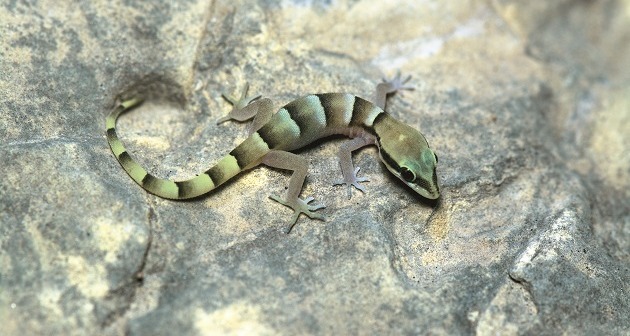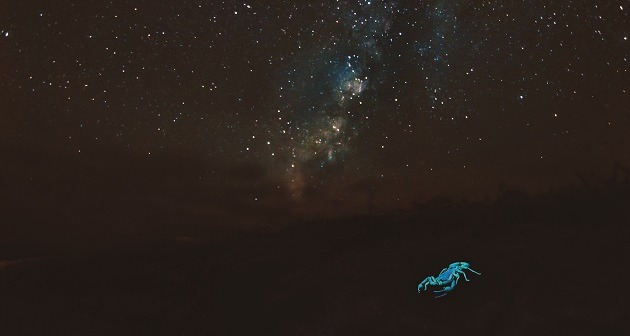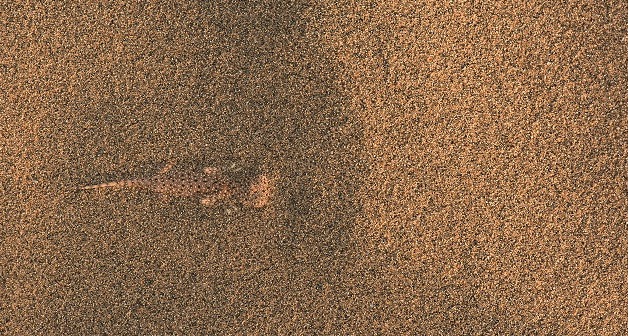Herping a Love Affair
First published in Sanctuary Asia,
Vol. 38
No. 2,
February 2018
Text and Photographs by Vipul Ramanuj
Herping has taken me from the wettest places in the Western Ghats to the extreme corners of Arunachal Pradesh and the dry Thar Desert. I come from the arid western region of Gujarat and the Thar has always felt like home. In my younger years, I remember scouring this desert habitat for herps especially the Sochurek’s saw-scaled viper Echis carinatus sochureki, which is unlike the other Echis carinatus ssp. The sochureki adults are considerably larger in size and much paler in appearance. This snake is equipped with a hemotoxic venom and is one of the world’s fastest-striking snakes. The sight of these side-winders leaving their tracks behind on the ripples of sand is unforgettable.
It is for this and other herps that I continue to explore Thar Desert year after year.
Back in the day there weren’t many scientific journals, articles or books that one could easily procure to expand one’s knowledge. Convenient online search engines too were a distant dream. Life was all about spending maximum time in the field to gain hands-on experience of wildlife.
There’s never a dull moment when you’re in Thar. Over the years, on my countless trips here, I’ve always gone back home with newer knowledge and better experiences. Herping takes on a new meaning in the desert. It is actually like a treasure hunt. You find yourself devising routes, studying the terrain, traversing different habitats on foot, picking up tell-tale signs on the shifting sand, driving at the lowest possible speed for road transects, always in pursuit of the hidden gems of the herpetological world!

A striking Persian gecko Microgecko persicus euphorbiacola, photographed in the Thar, was first recorded here in 2009 by researcher Ishan Agarwal.
Struggle for Survival
The struggle for survival drives life in the desert. While some species thrive during the sweltering hours of the day, others adapt by digging themselves into burrows, hiding under the crevices of rocks or simply resting under any available shade. Indian fringe-toed lizards Acanthodactylus cantoris put on quite a show of raising their fore legs and hind legs alternately to minimise contact with the hot sand as they go about in search of ants, termites and other insects.
The challenges only add to the adventure and the list of local friends you make along the way. Since my partner-in-crime and wife Catherene and I would specially visit these far-fetched locations for herptiles, we would easily catch the villagers’ fancy. This worked in our favour since they would approach us anytime they sighted a snake or a monitor lizard near their house. Once, while observing spiny-tailed lizards Saara hardwickii in a field, one of the kids from a Banjara community informed us of a desert monitor Varanus griseus stuck in their well for almost two months. We saw the monitor circling the water surface and asked for a rope and I plunged straight into the well. The well opening was just wide enough to jump inside and I found myself in waist deep water. It was an adult reptile and had almost filed off its nails in the struggle to climb up the wall to freedom. I could see scratch marks all around. I managed to secure it with a noose and send it to safety. I was then hauled out as a wave of celebration ensued. We released the monitor nearby and were gratified to have been able to rescue the exquisite creature.
On the other hand, the Laungwala toad-headed agama Bufoniceps laungwalensis pulls the disappearing act of sliding under loose sand by simply jerking its body. Not unexpectedly, it took many failed attempts to finally spot our first one in the expanse of dunes.
After dark the sand dunes display completely different signs of life. The sandfish Ophiomorus raithmai, is an amazing skink that ‘swims’ through loose sand in search of unsuspecting prey including beetles, crickets and sundry insects. The sand dunes are marked with the trails they leave behind, alongside plentiful beetle tracks that reveal some of the abundant nightlife of the dunes.
.jpg)
The seductive serpentine locomotion of the exquisite sandfish, which the author calls as ‘swimming ‘in the sand’, leaves behind unmistakable trails in the dunes.
Photographing the Desert
The Thar Desert is a wonderland for photographers. Apart from herps, the austere landscape is nothing short of mesmerising. The dunes take on golden hues at sunrise and sunset, while the nightsky lights up with gleaming diamond-like stars.
Photography at night poses challenges. Taking care of delicate equipment is a struggle. Nights are windy and macro photography involves lying low on sand dunes, with tiny sand crystals hitting your face together with countless insects attracted to the head lamp! And then there are scorpions to contend with, such as Buthacus agarwali, which buries itself in the sand. I had one crawl under my chest while lying prone on the dunes. Luckily, it wasn’t intimidated by my presence and eventually crawled away!
There are different habitat types found in the Thar Desert apart from sand dunes. This includes scrubland and rocky terrain. Having extensively studied the reptiles of Thar Desert, the checklist of the species found here have not just been carefully documented by me but are embedded in my memory. This includes the stunning, diminutive Persian gecko Microgecko persicus euphorbiacola recorded for the first time in India from Thar Desert (Agarwal, Ishan 2009). Despite its small size, the striped body pattern creates quite an impression and it can be difficult to spot when in tricky crevices. Sharing a similar habitat is the keeled rock gecko Cyrtopodion scabrum. The Sind sand gecko Crossobamon orientalis, with its patterned body and glistening eyes is equally impressive!
Most geckos don’t possess eyelids. Since they can’t blink, they lick their eyes to keep them clean and moist. Capturing them on camera in the act is both challenging and rewarding.

Large parts of the Thar or Great Indian Desert’s faunal diversity lies unexplored and under-appreciated. Exploration, research and photography will help redeem this fragile ecosystem.
The Land of Snakes and more
Far from the notion that deserts are lifeless, I have found them to be vibrant and alive with fascinating lifeforms such as the vibrant morph of the red-spotted royal snake Spalerosophis arenarius or the interesting looking Sind awl-headed snake Lytorhynchus paradoxus, with its perfectly adapted snout that enables it to dig into the sand to seek out prey.
Locals have many myths revolving around snakes. Some think of the red sand boa Eryx johnii as auspicious... others believe it to be a bad omen. Sadly, for the snake this spells trouble from both the sides. I like to interact with locals whenever I get the chance and while learning from them, I also try to expand their knowledge of reptiles to dispel some unreasonable fears which give rise to unfounded myths and superstitions in villages.
There are times when we’re scanning the habitat for species that we know we might find there. Other times we are, delightfully, taken by complete surprise.
In September 2017, I was lucky to see a species that had eluded me all these years – the Afro-Asian sand snake Psammophis schokari, an extremely agile reptile active during the day. Its sandy appearance and slender body offers it great camouflage. On that trip, we sighted the Afro-Asian sand snake, not once, but twice! And that too on a night walk.

The hard to spot, expert camouflager, the Laungwala toad-headed agama applies a special type of camouflage called crypsis or cryptic colouration, in which its behaviour and choice of background play key roles. The agama is capable of quite magically burying itself in loose sand with just a few bodily jerks.
The sheer abundance of life in the Thar is mesmerising. There is more to the desert than meets the eye and I for one can never get enough of what the desert has to offer. Since this is a lesser known and a poorly studied area, one of our main purposes of exploring the Thar is to highlight the species found here through photography and spread awareness regarding the sheer diversity and importance of this little-appreciated ecosystem.
Deserts are as vital to our planet’s diversity as the prime big cats’ forest habitats. Sadly, there are no comparable flagship species to ‘attract’ public attention and policy makers, apart from the falling population of Great Indian Bustards, which are restricted to small pockets of the Great Indian Desert. Consequently, the lesser known fauna of this region too faces a huge threat from large industrial projects involving windmills and solar power plants that extensively affect the habitat upon which these species are wholly dependent. The camp followers of such projects... road expansions, land use change, pollution and more in turn cause irreparable damage to the fragile ecosystem adding yet another nail in the coffin of arid zone biodiversity!



.jpg)

